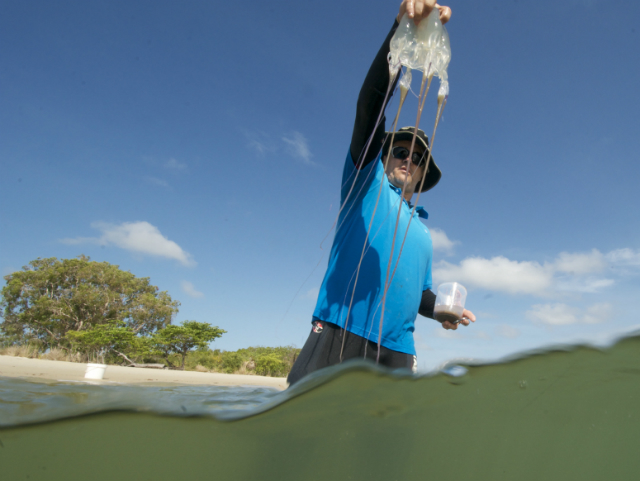Filtered By: Scitech
SciTech
Don't use vinegar to treat box jellyfish stings: it only makes things worse
By MACY AÑONUEVO
Vinegar has long been used as a folk remedy for jellyfish stings, but recent research suggests that it might actually make things worse by causing more venom to be discharged into the body.
This is at least true for the box jellyfish (Chironex fleckeri), a potentially deadly species that made headlines recently because of an accident involving local actress Anne Curtis.
Harmful first aid

Researchers from the Cairns Base Hospital (CBH), Queensland Emergency Medical Research Foundation (QEMRF), and James Cook University (JCU) in Australia have discovered that the application of vinegar, commonly recommended as a first aid measure for jellyfish stings, promotes the further discharge of venom from already discharged nematocysts of the box jellyfish.
Nematocysts are jellyfishes' natural defense mechanism: venom-laced stinging barbs similar to bee stings.
"Our research findings raise concerns that vinegar has the potential to do harm when used as first aid to treat box jellyfish stings," Jamie Seymour, Associate Professor at JCU, said. "After being stung by a box jellyfish, medical aid should be given immediately, with prolonged CPR to maximize the chance of survival."?
Previous studies have shown that vinegar (4-6% acetic acid) permanently deactivates undischarged nematocysts and prevents them from firing. However, this new experiment addressed how vinegar affects nematocysts that have already fired, as discharged nematocysts still contain some venom. Vinegar applied for 30 seconds (following current first aid protocol) to previously stimulated tentacles resulted in the release of 69% ± 32% more venom. This venom was equal in toxicity to the venom initially released.?
Nematocysts

Nematocysts are found on the tentacles and are triggered by mechanical stimuli. They are used to catch prey and for defense. When the nematocyst is triggered, the cell opens and a harpoon-like barb with attached hollow thread flies out. The barb penetrates the prey's body and venom is injected into the prey.
Nematocysts are venomous cells unique to the Phylum Cnidaria. Cnidarians include sea anemones, corals, Portuguese man-o-wars, hydroids, true jellyfish, and box jellyfish.
Most cnidarians are essentially harmless to humans, as their barbs and threads are not long enough to penetrate human skin. Their venom is also relatively weak, causing only mild rashes and itchiness. However, stings from some species such as the box jellyfish (C. fleckeri) and Portuguese man-o-war (Physalia physalis) are known to cause intense pain, inflammation of the surrounding area, and death through cardiac arrhythmia and arrest. — TJD, GMA News
Reference:
Welfare P, Little M, Pereira P, and Seymour J. 2014. An in-vitro examination of the effect of vinegar on discharged nematocysts of Chironex fleckeri. Diving and Hyperbaric Medicine 44(1): 30-34
More Videos
Most Popular



